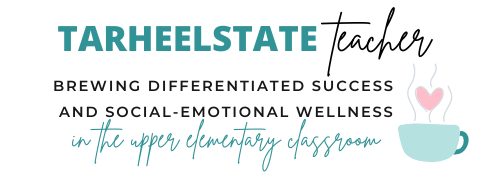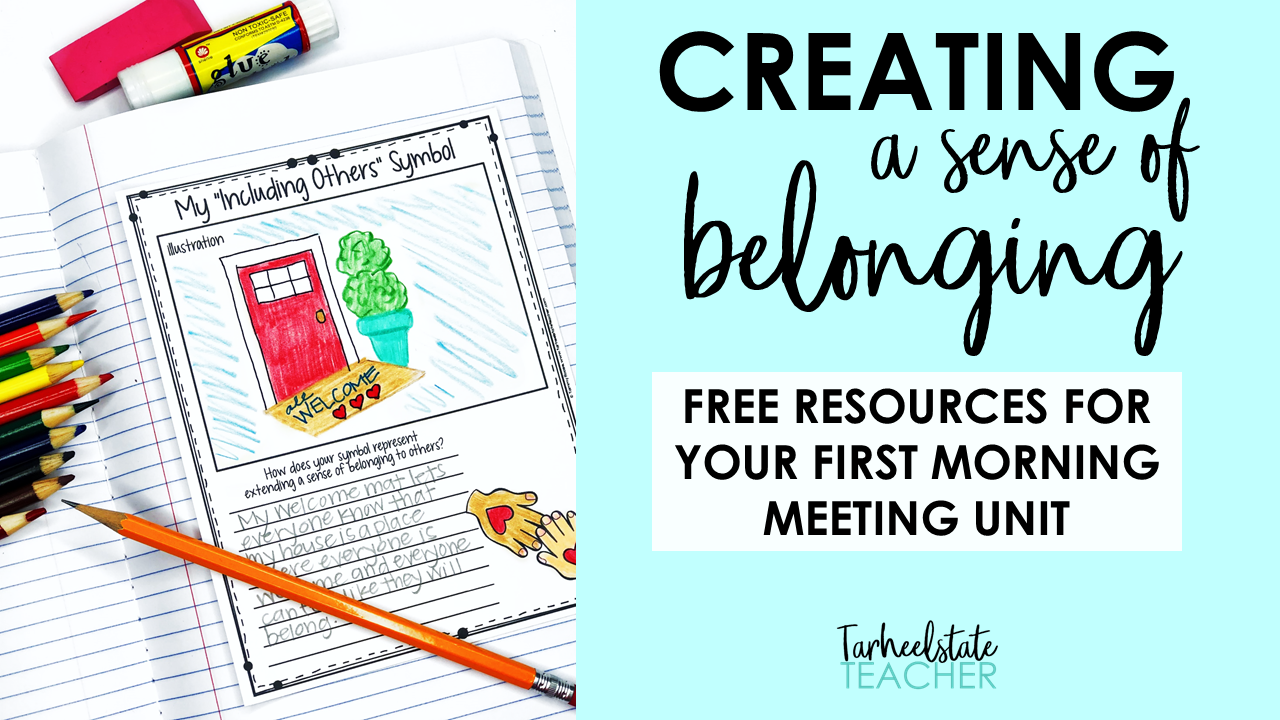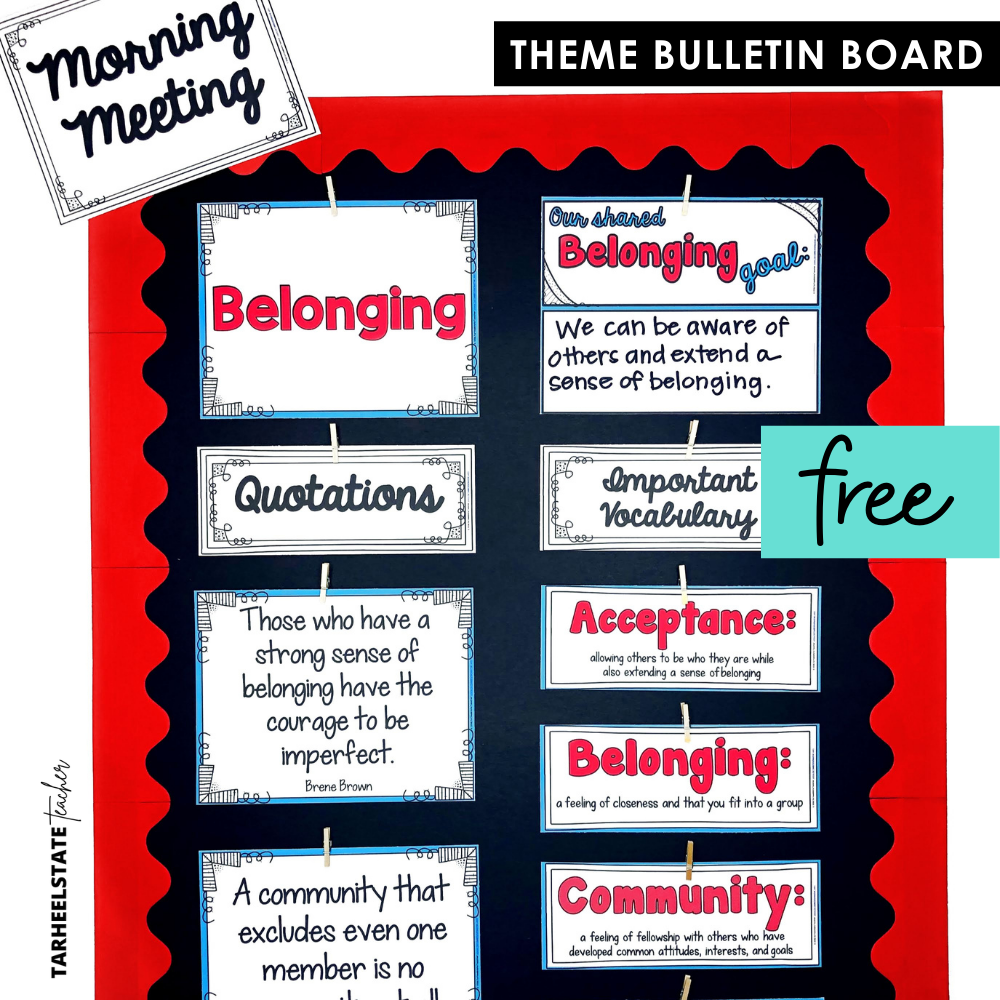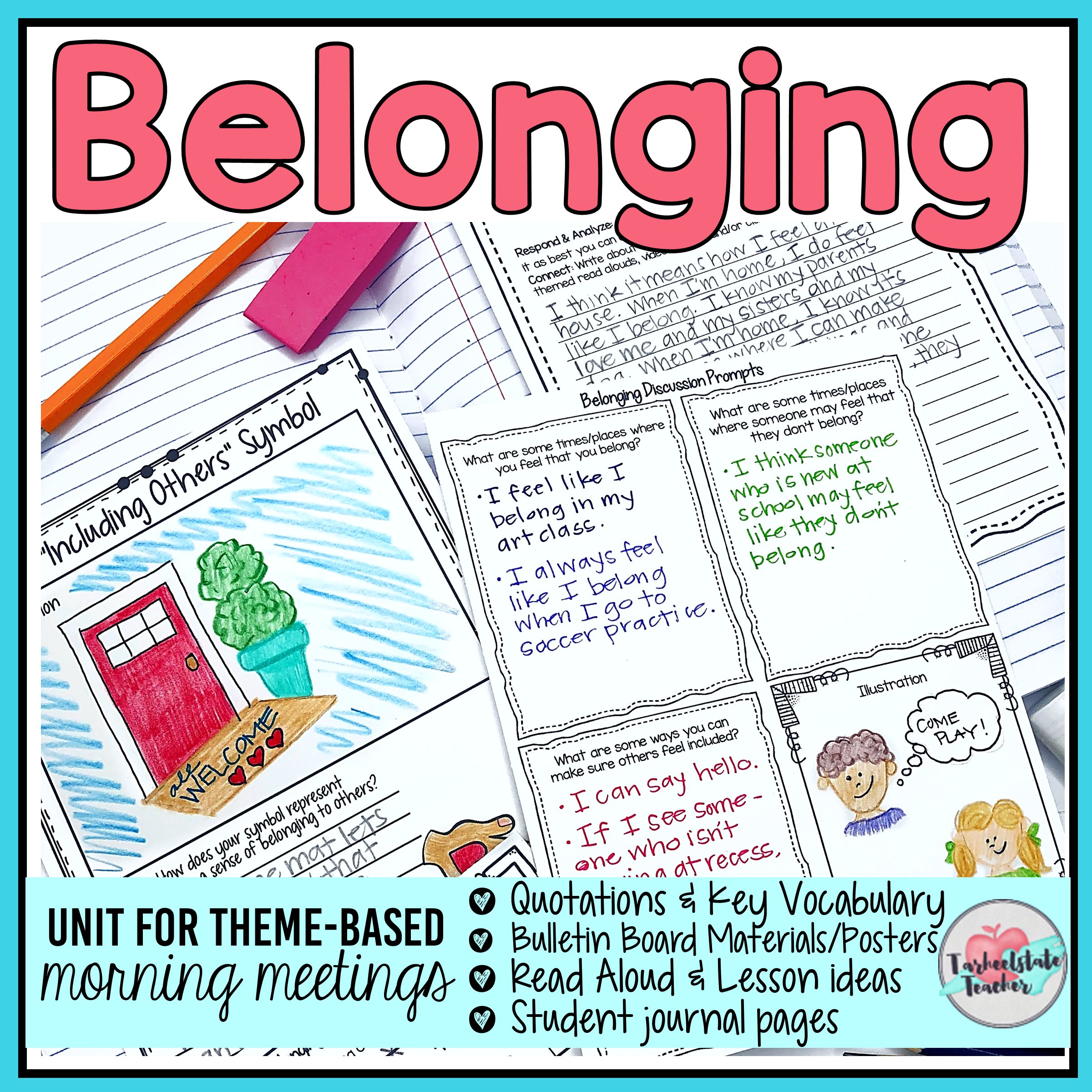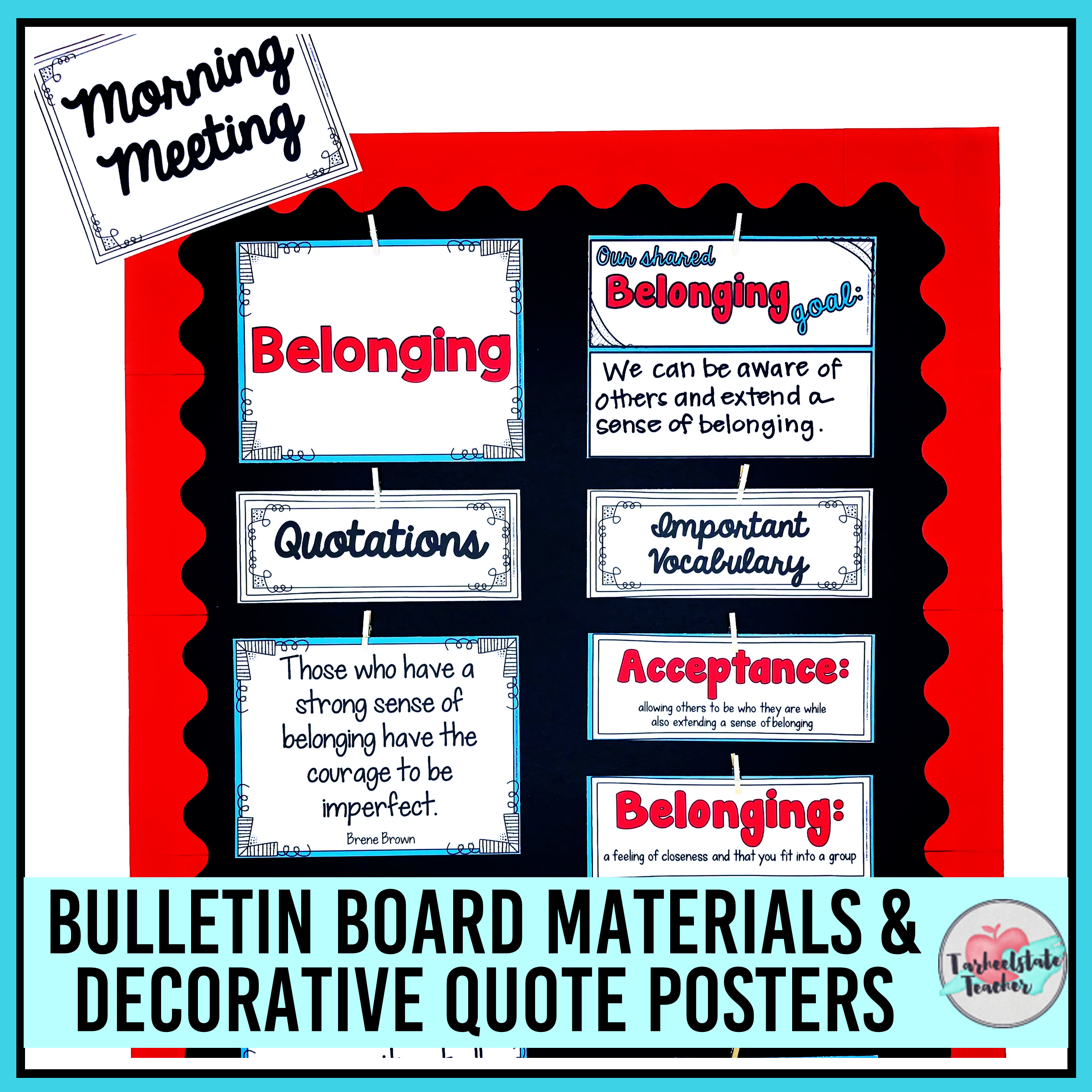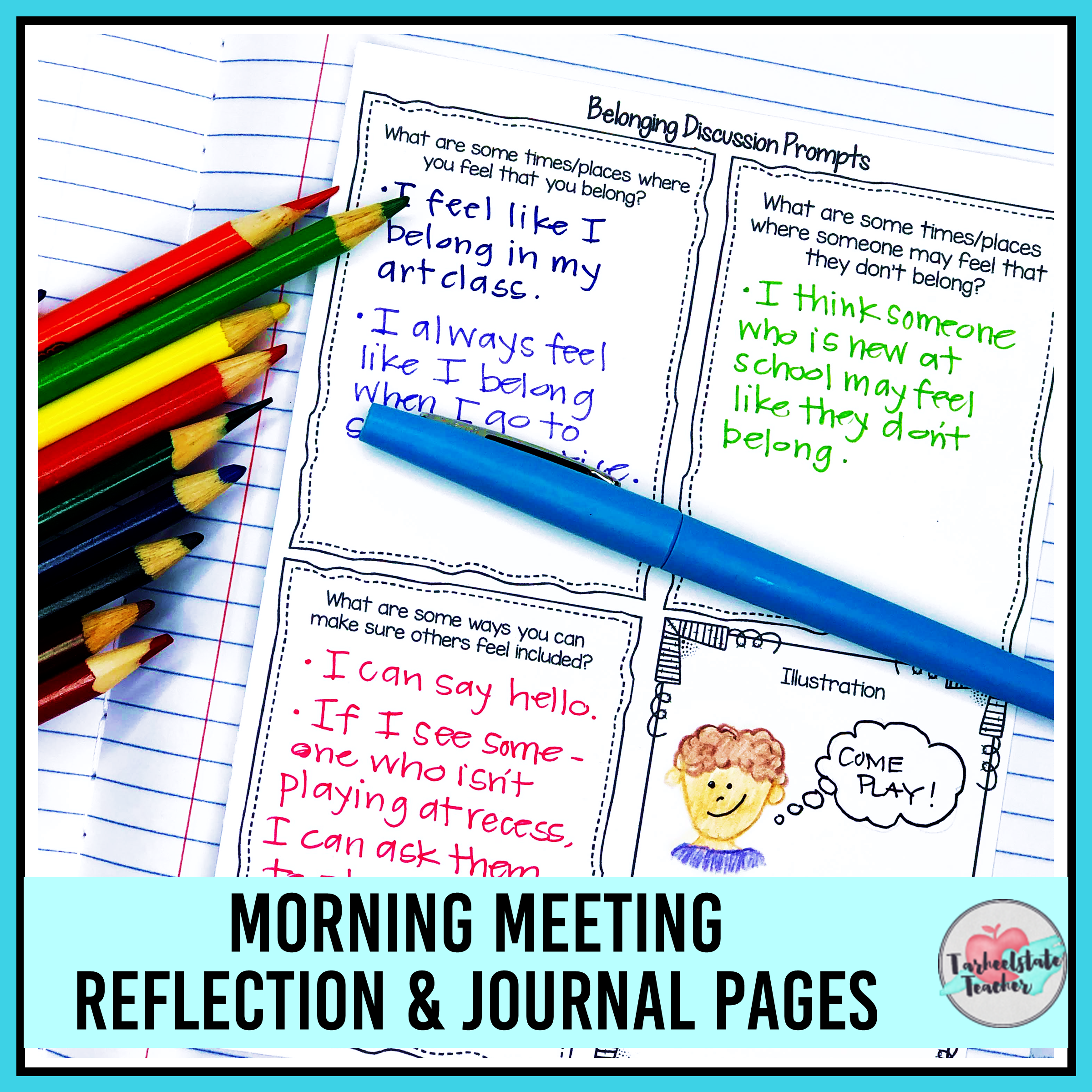Creating a Sense of Belonging: Setting the Foundation for an Inclusive Classroom Community
We all know that the beginning of the year is THE time to establish your expectations for your classroom community and how you want students to behave in your classroom environment. Today, I’m sharing the social and emotional learning lessons and activities I use to introduce the concept of “a sense of belonging” to my students. Developing a classroom climate where students understand that it is their responsibility to help everyone feel like they belong is one of the most important goals I have on my to-do list for the first week of school. It's my job to get this expectation out in the open right away: I expect everyone to extend a sense of belonging and kindness to one another. We will create an inclusive, family-like environment.
As I get ready for the beginning of the year, I always gather a stack of "tried and true" picture books that I plan to read aloud to my students throughout the first few weeks of school. And, it's always a great idea to have a stack of picture books ready for any down-time you may end up with during the first week of school.
Along with establishing the expectation for an inclusive classroom, my other critical goal is ensuring that all students have positive experiences with literature each and every day.
I've strategically chosen each picture book and identified an intentional goal for each read aloud—belonging, kindness, perseverance, using manners, feeling comfortable with being yourself, having a growth mindset, and so on. Many of the picture books I plan to read will help me introduce the morning meeting concepts that I will address more deeply after the first few weeks of school.
The lesson I’m sharing with you today is the beginning steps to introducing my morning meeting routines. As part of my master schedule, I have set aside 15-20 minutes for a morning meeting; however during the first two weeks of school, my morning meeting lessons tend to be longer because it’s the beginning of the year and I like to allow plenty of time for these important conversations early in our year.
The steps I take to teach my “sense of belonging unit” will sound a little bit like “getting to know you” strategies and a little bit like reader’s workshop. For this “sense of belonging” lesson outline, I’ve included suggested time frames for each step.
Best of all, I’m giving away everything you see here so that you can easily implement these social emotional learning lessons with your students! Be sure to subscribe to receive your free download email!
Note: Links to the suggested read alouds in this post are affiliate links. This means that I am a participant in the Amazon Services LLC Associates Program, an affiliate advertising program designed to provide a means for sites to earn advertising fees by advertising and linking to amazon.com. Read my full disclosure here.
Prior to the lesson, I prepare the student journal pages (that are free for you to grab!) .
How do I Begin to Set the Expectation for Extending a Sense of Belonging on the first day of school?
STEP 1, DAY 1: LAUNCH THE UNIT WITH A READ ALOUD
Big Al by Andrew Clements is my go-to read aloud for introducing my students to the concept of belonging. Big Al is the ugliest fish in the sea but he is also one of the nicest. He tries many things to fit in, often changing himself to look more like the other fish, but nothing works. His size and the look of him just scares all the other fish away. When a fisherman's net captures many of the fish including Big Al, Big Al saves the day and proves what a great friend he can be.
Big Al is fun to read aloud. It is the kind of story all children love to gather around. The illustrations are beautiful and fun to look at, so encourage your students to pay attention to the pictures as you read. To be honest, Big Al is just one of MANY books I will read to my class to help them learn to accept and include one another.
At the start of your lesson: Introduce Big Al by Andrew Clements. Ask if anyone has read the story before. (If so, say, "Oh, you are so lucky you get to hear this one again!") Discuss what happens in the story as you read along. But, during our first few read alouds together, I try not to interrupt too much because I want students to have the opportunity to just enjoy the story.
At the end of the story, (or as you see fit throughout) ask students how they think it felt to be Big Al. What did he want most? Students will probably say that he wanted to fit in and he wanted to have friends. Ask students questions like,
Why do you think the other fish did not accept Big Al?
Does this happen in real life or just in the ocean? ;)
Why was having a friend so important to Big Al?
If students do not say, "He wanted to belong," I would go ahead and introduce the word “belonging” yourself.
Yes, he wanted to have a sense of belonging.
I explain that we are going to be creating a classroom community where everyone feels that they belong and that they can be themselves.
No student in our classroom (or our school) should feel like a "Big Al."
I recommend breaking the lesson here and having your follow-up conversations/deep dive on the following day.
The following steps help you take this experience from "just another fun read aloud" to really setting the foundation and expectation for extending a sense of belonging to others. The read aloud simply set the tone for your discussion.
STEP 2, DAY 1 OR 2: INTRODUCE KEY VOCABULARY, INCLUDING THE IDEA OF COMMUNITY
After the read aloud, I introduce key vocabulary related to belonging. If this is on day 2, I’ll have my morning meeting bulletin board set up and ready near our meeting area. I’ll introduce and define belonging, acceptance, community, and exclusion for my students and we will return to the read aloud to discuss how each of those terms relates to the story.
I define a classroom community as "a feeling of fellowship with others who have developed common attitudes, interests, and goals."
I’ll quickly state a few common interests and goals we have—we all attend the same school and have a community through our experiences together, we are attending school to learn new things, and we all have the desire to spend our time at school feeling good about ourselves and each other.
I go on to define belonging as "a feeling of closeness and that you fit into a group." It is important that in our classroom community, we all feel that we belong to this group. We may not always get along, but we need to give one another chances and we need to be kind rather than pushing people away.
STEP 3, DAY 2: STUDENT REFLECTION
After introducing our morning meeting theme (belonging), students rate themselves on two statements:
How good am I at helping others feel that they belong? and
How strong is my sense of belonging?
Since it's the beginning of the year, students may try to make a good impression when rating themselves in these areas. After such a sweet story and a warm classroom discussion, they will most likely rate themselves higher than they should. It’s important to encourage students to be honest and not inflate their abilities.
Encourage students to think about last year, think about all their classmates and if they had any difficulty with making sure others felt that they belong. After rating themselves, students should set a "belonging goal" and identify strategies for working on this goal. {You will also discuss ideas when you bring students back together}.
STEP 4, DAY 2 OR 3: WHOLE GROUP DISCUSSION
Next in my lesson, I want to get students really thinking and talking about the concept of belonging. I’ve created a 4-part discussion journal sheet with three questions and a spot for them to draw a picture related to belonging. The discussion questions typically have three main goals: prompt students to think about their own experiences, get them to relate to the experiences of others, and prompt them to generate strategies or ideas for working on that skill.
The discussion questions I’ve included on our Belonging journal page are
What are some times/places where your feel that you belong?
What are some times/places where someone may feel that they don’t belong?
What are some ways you can make sure others feel included?
I create anchor charts based on these questions so that I can collect student responses as we have our discussion. These anchor charts are perfect for keeping up in the classroom as you continue building on the concepts of belonging and community AND for later in the year if you need to refer back to them at any time.
STEP 5: STUDENTS SET A PERSONAL GOAL RELATED TO BELONGING AND COMMUNITY
The Belonging self-reflection and rating sheet has a place for students to record a personal goal that they can strive for related to belonging. You can either have students set a personal goal after completing the self-ratings OR after you’ve had your whole-group discussion to share insights and ideas about the 3 questions. If it feels appropriate, you can have students share their belonging goals. I also like to set a whole-group belonging goal so that we create a statement of a common goal together.
Be sure to come back to these goals throughout the week to see how students feel about their personal sense of belonging and how they are extending a sense of belonging to others. Of course, keep an eye on interactions to see how you can continue to encourage a sense of belonging and plan to read aloud additional books related to belonging, kindness, and compassion throughout the year.
EXTENDING THIS LESSON:
The steps I’ve shared today (read aloud, introducing key vocabulary, self-reflecting, setting goals, and discussing) are just the beginning steps I take to create an inclusive classroom and introduce the concept of belonging to my students. I actually teach Belonging as a two week unit during my morning meetings. We read more picture books, watch videos, complete activities, and have more discussions that help us develop a deeper understanding of Belonging as a theme.
As we continue our unit, we explore the concepts and themes in Big Al in a more in-depth manner. After reading a number of belonging-themed read alouds, I want students to notice that stories about belonging often have a character who is different from the others and does not fit in.
After trying lots of different strategies to gain a sense of belonging, almost always changing him or herself to try to be like the others, the character somehow saves the day and immediately attains a sense of belonging because of their heroic actions. There are some issues with story-lines like that that we should be critical about and have our students hold up a critical lens to:
When characters change themselves to be like others, they rarely seem happy; they aren’t able to be their true selves. Even if they gain some acceptance this way, they aren’t truly being accepted for who they are. They are being accepted for who they’ve changed themselves to be.
It is rarely possible for a child (especially the underdog, the one that doesn’t quite belong) to "save the day" in order to fit in.
These ideas are much deeper than I want to get into for the first day of school, but I want you to know that this story and theme offers lots of opportunities for more critical reading and deeper discussions.
In addition, I like to culminate our Belonging unit by helping students develop big ideas and generalizations through examining text to text connections.
GET YOUR FREE BELONGING UNIT RESOURCES!
This free social emotional learning theme unit is packed with lesson ideas, student journal pages, discussion prompts, self-reflections, bulletin board materials, and more. YES! Everything you see in this post for the belonging theme is FREE! Just subscribe above and I’ll send it to your inbox! 💕
THEMES TO GUIDE YOUR MORNING MEETINGS ALL YEAR LONG
If you’d like more social emotional theme units with a focus on encouraging students’ social, emotional, and academic success, you may be interested in the Morning Meeting Mega Bundle of 17 theme units. With units focused on
and so much more, your engaging morning meeting plans are done for you and your students will love them!
You can take 10% off the Mega Bundle of all 17 themes by using the code MM10 in my website store.
If you need digital resources for morning meetings, I’ve got you covered with Google Slides versions of each theme set. Grab your FREE Morning Meeting slides for belonging here.
